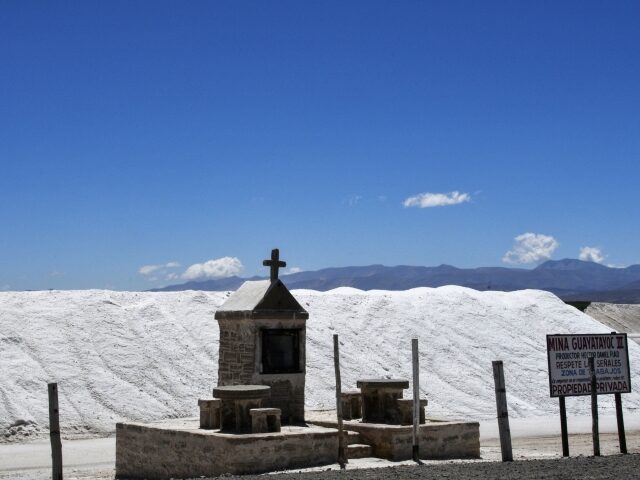The Indian government is reportedly interested in buying a copper mine and up to two lithium mines in Argentina, in a bid to catch up with China as a top provider of minerals needed for electric vehicle (EV) batteries.
India’s Business Standard on Thursday explained that several Indian mining and minerals corporations joined forces to create an enterprise called Khanij Bidesh India Ltd. (KABIL) in 2019, with an eye toward securing a “supply of strategic materials.”
A team of geologists from the Indian government went hunting for lithium in South America last November, and now KABIL is reportedly prepared to move on acquiring one or two lithium mines and a copper mine, possibly developing them in partnership with an Argentine firm called Camyen. Camyen spotlighted the two lithium mines in La Aguada and El Indio to KABIL as possible acquisitions in October.
Officials with the Indian Ministry of Mines said KABIL is interested in partnering with a “state-owned organization” in Argentina to explore “the possibility of establishing projects for the extraction of lithium in due course of time. They said the prospective Indian and Argentinian corporate partners have begun “commercial evaluation” of joint projects.
As the Business Standard noted, Argentina is the world’s fourth-largest producer of lithium, which is essential to battery manufacturing. KABIL is also looking at lithium mining projects in Chile, which is the world’s number two producer. Australia is currently number one, but Chile’s estimated lithium reserves are much larger.
The dominant lithium processor, on the other hand, is China. China controls 60 percent of the global capacity for processing raw lithium into battery materials, and demand for those products is increasing as governments push their populations to buy electric cars. Demand for lithium is expected to surge by 400 percent by 2030, and Western planners fear China could begin hoarding the lithium supply for its own market or cut off lithium to other countries for political reasons.
Lithium is found all over the planet, but relatively few regions feature concentrations big enough to justify expensive large-scale mining efforts. India has very little lithium on its own territory but is keen to acquire foreign mines and build up its refining capacity.
The methods used to harvest lithium vary between regions. In Argentina, Chile, and most of South America, mining does not usually involve digging into rock formations. Instead, brine is pumped into salt-flat ponds, and lithium salts are then extracted from the brine. This method is more expensive to set up than traditional rock mining, but production becomes cheaper after the up-front costs are covered.
India is also considering lithium offers from Africa, where several countries have offered to trade access to their lithium mines for relief from their development debts. Some Indian analysts believe these African countries are hoping to escape from China’s Belt and Road “debt traps” by selling mining assets to India before the Chinese can seize them as repayment for unpaid loans.
Africa’s largest known lithium producer, Zimbabwe, appears to be firmly in China’s orbit, but India has extended some $14 billion in credit to other African governments, with considerably more flexible terms than China’s Belt and Road loans typically offer.

COMMENTS
Please let us know if you're having issues with commenting.